INNOVATIVE TEACHING SHOWCASE
Teaching Civic Engagement:
Bringing Service Learning to a Science Classroom
Overview
The Foundations for Service-Learning in a Science Classroom
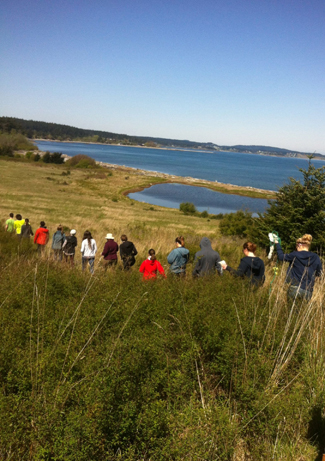
Service-learning activities can be an easy way to create an authentic community-oriented experience for students that will help facilitate their learning though an applied project in which they have accountability to other students and to a group outside the conceptual world of the university. Using this model in a science classroom can be an extremely effective way to engage students in learning conceptually challenging material�like statistics�that students traditionally have a hard time learning in the vacuum of a classroom. In addition, service-learning fosters civic engagement and helps science students understand that they (as budding scientists) play an important role in their communities. One of the ways I have found to enhance a standard service-learning curriculum is to bring in elements of experiential/outdoor education teaching philosophy that I have worked into my course. Fostering positive group dynamics, accountability, self-reliance, and good communication and leadership skills which are traditionally not emphasized in science courses can lead to more successful service-learning/experiential group projects.
Bringing Service-Learning to Science Classrooms
I am not the first faculty member here at WWU to employ service-learning in my classroom, but I hope laying out the framework for which I applied service-learning in a class traditionally unpopular with students will be a useful model.
When I was assigned BIOL 340 Biometrics (biostatistics), my first thought was that I could tap my past success in teaching statistics to students in my immersion field-based independent research courses. These students, after designing their own project and collecting data, are begging to learn statistics so they can analyze their data and understand the results of their projects. I also observed that the primary motivating factor driving their interest in statistics was that they were expected to give public talks on their research, and they wanted to ensure they were making sound conclusions. So, these students were not motivated by grades or impressing the professor, but were motivated by perceived expectations of peers and the general public. These students were engaged and ready to learn. One student said:
�Working with real data creates an incentive that motivates the learning process. I had already completed a statistics course before Beam Reach, but I feel like being able to work with data that was relevant to my specific interests was extremely helpful in grasping some basic concepts that I did not necessarily feel comfortable with in the classroom.�
Next, I considered how I might create a similar experience in a classroom for 40 students (as opposed to a max. of 6 students in the immersion research courses). Service-learning seemed like an obvious choice, and WWU�s commitment to it through the Center for Service-Learning gives faculty additional resources to design and implement service-learning courses.
I laid out the following criteria in designing my program:
- a real-world application of statistics (or any specific subject matter)
- an opportunity for students to work in groups, where they had accountability to each other as well as an outside partner
- a project that would integrate with the basic curriculum of the course and could be completed in a matter of weeks (this is where finding the right kinds of partners for a science class is key)
- produced a product that could be easily evaluated by instructors and was valuable to partners
- creation of an environment of foster student creativity and develop positive group dynamics where students buy in not just for their grade, but because they feel a sense of commitment to the other students and their partners
Service Learning in Biostatistics
The Model from My BIOL 340 Course
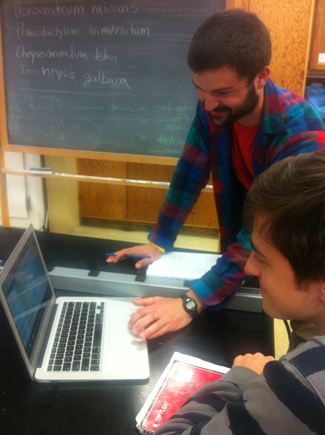
The BIOL 340 service-learning project was designed as an end-course final project, where groups of students were teamed up with community partners from organizations that have collected data that they either did not have the expertise to analyze or the time to analyze. Students received a data set from their partners, learned a bit about the partners� needs and goals for the data, worked in teams to do basic analysis and hypothesis testing on the data, and then prepared a final report that was presented back to their partner. The students also gave a final presentation to the class, to expose all students to the range of ways their course curriculum was applied to real data.
The real key to my successful service-learning project was structuring the delivery of course content, lectures, and labs as a model for the sequential steps any scientist would take in analyzing a dataset they inherited. The first 6-7 weeks of the course was structured like a traditional statistics course with lectures, computer labs to learn software, and problem sets. I integrated activities that were designed as inquiry-based mini-projects done in groups so students would learn how to access, manage, and analyze real world data sets though the first few weeks. So, not only were concepts delivered in the order in which the students would apply them to their service-learning project, but they were practicing these concepts on data they had downloaded themselves from internet data resources and were dealing with issues of real world data and forming and testing hypothesis with existing data, from the beginning of the course. By the time the students chose their service-learning projects, they had been through the process of managing and analyzing real data one time as an entire class, under my guidance. The service-learning project involved simply implementing that process again with their partners� data.
How I applied the criteria above to my course:
-
real-world application
Find partners who had data that was not being analyzed. I worked to find a range of partners so that students would be able to work on a project that was of personal interest to them. I leveraged my own contacts in the community to find partners as well as worked with the WWU Center for Service-Learning, an office with many community contacts. Partners for 2012 BIOL 340 service-learning projects included:
- WeSnip – Whatcom County Spay and Neuter program for low income families
- Swinomish Tribe Shoreline Development surveys (with Todd Mitchell)
- Swinomish Tribe Bivalve surveys and population assessments (with Dr. Julie Barber)
- Nooksack Salmon Enhancement Agency
- Whatcom County Department of Public Works (water quality surveys)
-
work in groups/accountability
Students assessed each other though a peer evaluation that included an �intellectual contribution� component, and an �effort to help complete the project� component. I think that defining the difference in the two criteria helps students understand the multiple ways in which they need to contribute to a group project. I heard from many students that this was one of their most successful and enjoyable group projects.
-
project integrates with the basic curriculum
For science classes, this is easier than one might imagine. I just needed to integrate the issues of dealing with real world, dirty data, and hypothesis testing with existing data archives into the standard statistics curriculum. This included:
- file format explanations, manipulations, and conversions
- handling simple Microsoft Excel issues that scientists deal with all the time but to which students have limited exposure
- learning database techniques (SQL) in an easy, cloud-hosted database designed to make large data handling assessable to students (see SQLShare Information)
- practicing forming hypothesis and testing hypothesis while working with existing data in groups in class
-
product easily evaluated / valuable to partners
The culmination of the service-learning project was to make a final report, in a professional report format (as opposed to a scientific paper). This was easy to grade with a traditional rubric and easy to then share with the partner organization.
-
foster student creativity and positive group dynamics
Because the students had the framework for analyzing a dataset already, I encouraged them as a group to get creative in both how they analyzed the data and how they visualized the data. I gave them a few model examples from real-world non-profit annual reports and then asked them to follow the model while milking all they could out of the data they had from their partners. Many students relished the opportunity to be creative and use other skills like design in their statistics project. I also emphasized data visualization throughout the course. Data visualization is an increasingly important skill for scientists.
I help to foster positive group dynamics in a number of ways:
- I had students work in groups to problem solve throughout the course.
- I would circulate among the groups in the classroom, helping to facilitate communication and participation among all members.
- Through Canvas, our learning management system, groups communicated with me using group communication tools that allowed me to be an observer in the group discussions and planning.
- I found some time each class period in the last 3 weeks of the course to touch base with each group, asking them for updates in a way that made all students accountable.
An Experiential Model: Lessons from Outdoor Education
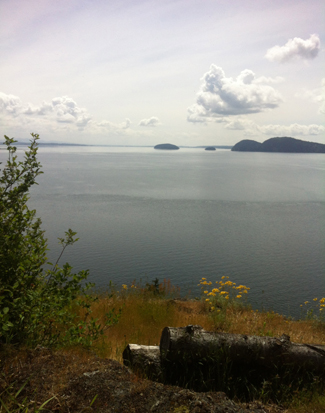
My Path as a Traditional and Outdoor Educator
I began my experience as an educator with a mix of outdoor experiential education and traditional classroom teaching. After a traditional, large state school undergraduate education at the University of Wisconsin-Madison, I decided I wanted an experiential outdoor leadership educational experience. I enrolled in a month long National Outdoor Leadership School (NOLS) backpacking course, and it changed my philosophy on education. I realized that the process of emersion into an intense group experience can catalyze a meaningful learning experience. From there I became an outdoor educator though a program called Outward Bound that has a rich general teaching philosophy. In addition to traditional outdoor education courses, I taught a course called Environmental Expeditions, where high school students learned environmental science and stewardship, while on their Outward Bound sailing course. It was here where the seeds of my experiential classroom-based teaching were planted.
I continued teaching Outward Bound courses in the summer while I was a graduate student at Harvard University, where I was a teaching fellow for four traditional biology courses. Outward Bound has an urban school in Boston, which made it easy for me to stay engaged without major interruptions to my academic progress. Putting time and energy into developing my skills as an outdoor educator, especially working with diverse populations at an urban school, was an investment that built the foundations for my interests in active and experiential education in the university setting. My goal was to one day be able to bridge the two worlds in a substantial way. I was fortunate to have this opportunity after my post-doctoral research fellowship at the University of Washington, while teaching a program call Beam Reach, run though the UW marine research labs.
Beam Reach is a quarter-long independent research course for late-stage undergraduates. Students spend a few intense weeks learning about the environment they will be studying, then propose independent projects, conduct their research during an intense field-based experience where the whole class lives on a sailboat for a month, followed by a period where they analyze their data and present their results. This amazing teaching opportunity allowed me to transfer my outdoor education experience to the university level, and gain some insights into how biology undergraduate students learn in this environment. One of the greatest take-away lessons was that teaching statics to these students was easier and more effective than any other learning experience I had seen. The students were eager to learn statistics so they could analyze their own data and because they were going to present their results, the statistics MATTERED to them. They did not want to make incorrect interpretations and have to present unfounded conclusions. I marveled at this process and so when I was assigned to teach the required Biostatics class in the Biology Department at WWU, I knew how to get students engaged in learning and doing statistics. I just needed to figure out how to adapt this model to the classroom.
General Model for Service-Learning in Science Courses
- How to building the entire course as a model for the process students will go through to conducting their final projects:
- model the process though the quarter
- arrange topics in the order they will do thing for their projects
- teach concepts in the course such that they address the core values (from above) and teach students how to think about problems so they can apply those skills to any data set that comes their way
- finding partners in a range of disciplines
- setting aside time for projects during class time
- require a reflection assignment, asking student to synthesize the experience with their personal and course goals
- Advantages of service learning for science students:
- getting students excited and invested in an a group project
- real world experience
- networking
- resume builder
- exposure to science careers though partners
- Logistics and other challenges:
- Working in groups
Start the process early and set expectations for respect and participation. I often reinforce that we are in an active learning process and I don�t expect everyone to know everything and I expect some people to know more about some things than others, but that doesn�t leave anyone off the hook for contributing. Active learning techniques such as jigsaws and think-pair-share on new topics weekly help develop the culture of not being afraid to participate.
I know not all groups had equal success in distributing the work load and engaging all members. This is inevitable, but I think more consistent and longer check-ins, and more organized group messaging on my part will help with some of the inconsistencies.
- Finding time in and out of the class room
Again, modeling the sequential nature of the course in the same way students will be taking on their service-learning project is helpful. I also set aside at least 10 minutes of class time each meeting for groups to check in with each other face to face.
- Peer evaluations and leadership skills
This is key to make sure students have accountability to each other (see my peer evaluation rubric).
- Choosing appropriate partners
The projects that were the most successful were from the groups that met face to face with their partners. I did not make coming to campus to meet with students a requirement. Some partners did come to campus and others had groups come visit them off campus. Some groups never met with their partners in person. These groups struggled the most to feel like they met partner expectation. This created some frustration as the students still felt very accountable, yet didn�t feel they knew exactly what to do to meet expectations, despite my reassurances.
- Tying the service learning project back to the primary course objectives
In my BIOL 340 Biostatistics course, the tie between analyzing a real world dataset and their learning of statistics seemed self evident, though I did formally tie this in to course goals when introducing the project. Despite this, there were still some students who felt that they didn�t understand the link, while others exclaimed that they loved applying their skills in the real world. In order to make this tie-in for all students, I think the connection should be reinforced regularly, possibly with mid-project reflective writing assignments.
- Working in groups
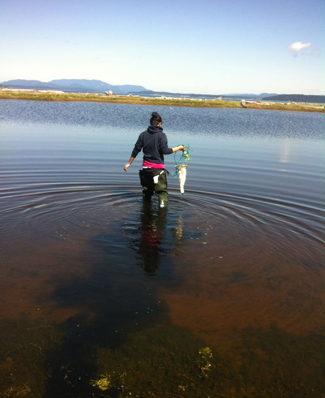
Next Steps
There are a number of things I will do as next steps to more fully integrate the service-learning project into the BIOL 340 class. In some cases, students lost sight of the application of their coursework to their service-learning project, while other students were very aware and excited about the connection. To keep driving home the relevance of applying the course material in a real world application, I will use additional reflective writing assignments to help them think about the process. I will also further stress that the service-learning projects are final projects, because they are an opportunity for students to demonstrate their new statistics skills in an application instead of in an exam. I plan to eliminate the traditional final exam, and ask final exam type concept questions that can be answered in relation to each student�s service-learning project. That way, I will still use an exam format to test student on the nuts and bolts concepts, but in a way that will further emphasize the concepts in an applied project with which the students have become very familiar. I also would like to incorporate questions on the concept-based final exam that draw on all the service-learning projects (each has its own flavor of application) so that the students have incentive to learn from each group�s experiences. For this to work, I will give groups more time to present their projects, analytical process, and results.

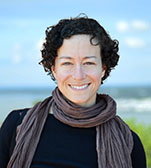
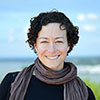

Student Comments
"I normally dread group projects but this group had a wonderful exchange of give and take, everyone was excited about the topic, forthcoming with intellectual contributions, and willing to put in their share of the work. If something needed to be done, someone would always volunteer and it wasn't always the same person. Our brainstorming sessions were especially creative with so many brains. There were no members that were hard to work with--everyone rocked."
"I had an amazing group and we actually really bonded over this project and I look forward to playing with the data more over break."
"Our group functioned well together and I'm happy with everyone's effort throughout the whole process."
See More Student Comments